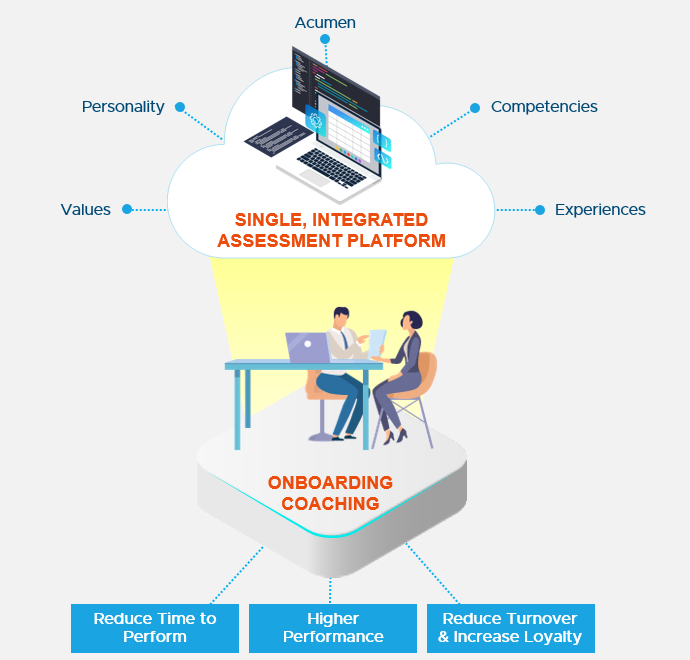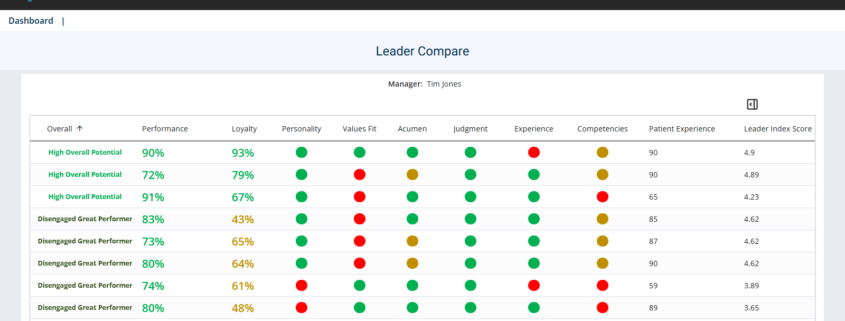Aligning Leadership Hiring, Leadership Development and Succession
We have documented for years the need for HR to get aligned with business operations and business outcomes to maximize overall effectiveness. However, there are three key areas within HR that are often misaligned and represent significant opportunities to push the function forward to drive business outcomes. Those two areas are hiring, development, and succession. These areas are often misaligned for three reasons: 1) utilizing external different vendors, 2) different internal managerial skillsets/mindsets and 3) data integration is messy, often being pulled from different sources with its own inherent problems that prevent proper analysis and accurate insight. The good news is that there are three key steps that can get these areas aligned quickly to drive important business outcomes such as performance and turnover. The three key steps are:
- Uniform Competency Model
- Aligned Assessments
- Succession/Talent Review Aligned to Business Outcomes
Uniform Competency Model
We won’t take a deep dive into competency models here, but many organizations either do not have a validated competency model that is well-communicated and utilized as the basis for important talent processes (e.g., recruiting, hiring, onboarding, development, succession). For those with a solid leadership competency model, it is often used in a silo (hiring or development) or the hiring team uses a different leadership competency model that is not aligned with the development team’s leadership competency model. The big opportunity here is to use the same competencies for hiring and developing leaders. This way, the organization is ‘speaking the same language’ when it comes to their expectations for leadership effectiveness even before the leader is hired. For more information, see our book “Business-Focused HR: 11 Processes to Drive Results” for a deep-dive into competency models and how to build them effectively.
Aligned Assessments
Once the competency model is in place, this sets the foundation for building a key piece of your hiring assessment structure. Assessing key leadership competencies via structured interviews (during the hiring process) and using a self/direct-report assessment for current leaders provides instant alignment where you now have data on new leaders and current leaders. It goes further than that—assessing values/culture fit, acumen, biodata, and personality in the same way

for new leadership hires and current leaders provides your organization with an aligned, comprehensive view of all leaders. Further, this alignment will bring together those two key HR functions (hiring and development) in order to make sure that the process evolves as needed (e.g. new competencies assessed for a changing work environment). Finally, coaching—whether it be for new leaders or current leaders—is always enhanced when the coach has access to comprehensive assessment data. Having that assessment data completely aligned for new/current leaders will ensure that your coaching function is focusing on the right areas to maximize performance.
Succession/Talent Review Aligned to Business Outcomes
One area of HR that can also suffer from misalignment is the succession/talent review process, where decisions on career development opportunities and promotions can be based on vastly different criteria than what is assessed during hiring and development phases. By aligning all your leadership assessments from the beginning of the employee lifecycle, you will start the talent review process by comparing all leaders on the same criteria of effectiveness: competencies, personality, biodata, acumen and values/culture fit. The succession/talent review process is maximized because you will have aligned information as well for both recently hired leaders and all other leaders.
Beyond having aligned assessments, it is critical to bring in a few KPIs (key performance indicators) that the organization is focused on. Why? Although the aligned leadership assessments will tell you a lot about the elements of the leader and what drives outcomes such as turnover and performance, integrating each leader’s actual performance on those KPIs into your succession/talent review process ensures that you get the complete picture of each leader. This complete picture will maximize your ability to make the right succession decisions based on the most objective/valid data possible. The graphic below is a screenshot from our talent platform that integrates assessment/outcome data in one place. Hutrics is the only vendor that aligns assessments across the leadership lifecycle and connects them directly to business outcomes. For more details on how to conduct an effective succession/talent review meeting, please consult our second book “Business-Focused HR: 11 Processes to Drive Results”.

To learn more about aligning assessments to help your organization achieve better business results, contact us at [email protected].


